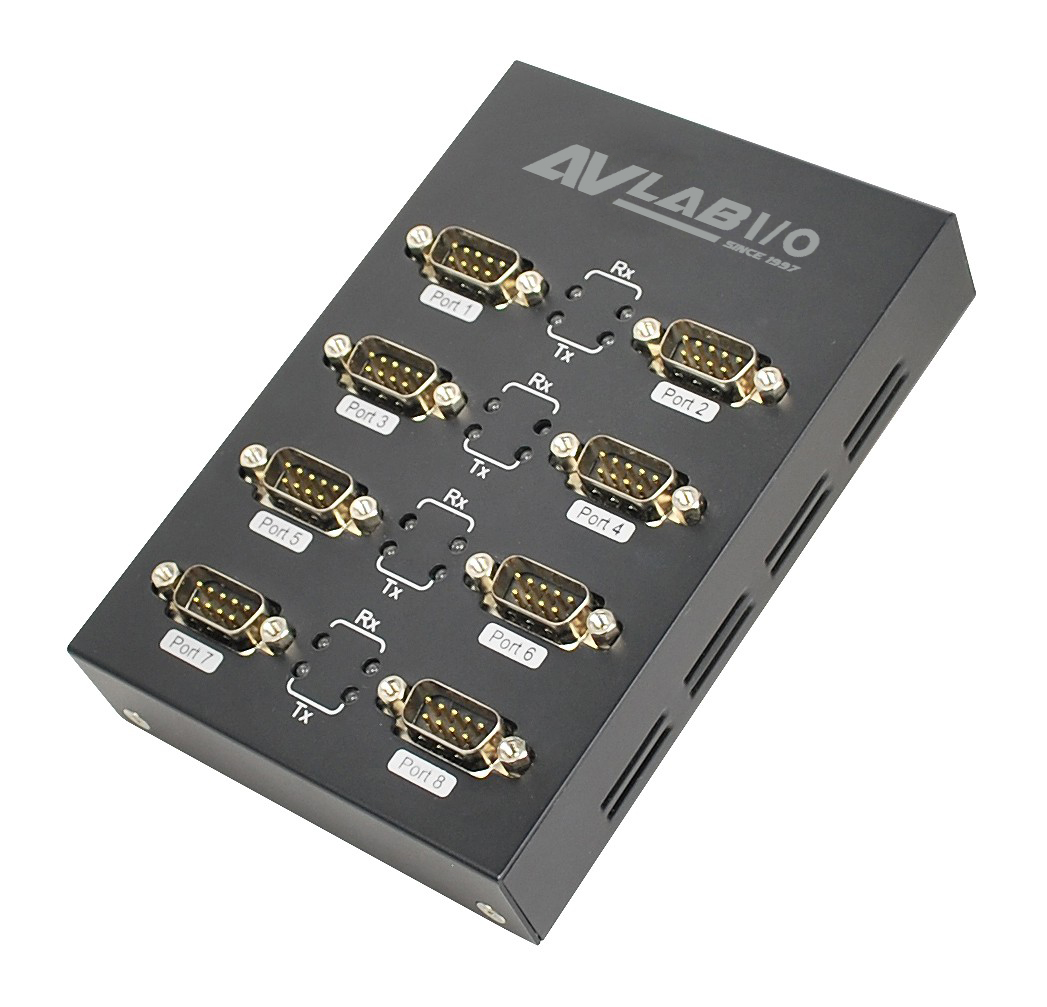產品詳情
Industrial metal housing
provides durability and efficient cooling for long life and dependable performance
USB plug-n-play
Provides eight 9-pin (DB9) RS-232 ports
產品規格
Chip: NEC uPD720114 and Moschip MCS7840CV
Compliant with Universal Serial Bus 2.0 Specification
Supports data transfer rate up to 230Kb/s
LED status indicators
Metal housing for better RF shielding
Interfaces/Ports:
■ 1, 5-pin, Type B, USB 2.0, Female, Input
■ 8, 9-pin, DB9, RS-232, Serial, Male, Output
Dimensions: 3.75" (W) x 5.5" (H) x 1" (D)
Weight: 0.86 lbs (390g)
Color: Black
Power adapter:
■ Input: 100-240V AC, 50-60Hz, 0.15A max
■ Output: 5V DC/1A
USB 2.0 cable:
■ Connectors: USB 2.0 Type A (4-pin), Male to USB 2.0 Type B (5-pin), Male
■ Length: 3.3 ft (1m)
Certifications/Standards:FCC, CE, RoHS
Warranty: 1 years limited
Country of origin: China
下載
- AVLAB-US04-1_Driver_for Windows 8 (32-/64-bit) / 7 (32-/64-bit) / Vista (32-/64-bit) / XP (32-/64-bit) / Server 2003 & 2008 (32-/64-bit) / Server 2008 R2 / 2000
- AVLAB-US04-1_Driver_ Works with Linux Kernel 2.6 but not supported (tested with Kernel 2.6.32) no warranty implied use at your own risk.
- AVLAB-US04-1_Driver_for Windows 10 (32-bit) / 8.x (32-bit) / 7 (32-bit) / Vista (32-bit) / XP (32-bit)
- AVLAB-US04-1_Driver_for Windows 10 (64-bit) / 8.x (64-bit) / 7 (64-bit) / Vista (64-bit) / XP (64-bit)
- Quick Installation Guide
FAQ
- Q: What is USB Type-C?
- USB-C is a type of USB connector that is capable of supporting the following: ■ Data transfer speeds up to 10Gbps, if you use USB 3.1. ■ Bi-directional power delivery up to 100W, if both the USB host connection and the device support it. ■ Alternate modes, which deliver different types of data at different speeds. For example, DisplayPort Alternate Mode (DP Alt Mode). If using Thunderbolt 3 over USB-C, the connection is capable of additional features. For example, Thunderbolt 3 is capable of 40Gbps of total bandwidth. Not all USB-C ports or devices are capable of supporting all of the features listed above, or all of the features at the maximum capabilities. If you require a specific USB-C feature, your USB host connection, cables, and device must all support the feature that you require. For more information about whether your components support specific USB-C features, refer to the information provided by the manufacturers.
- Q: How do I confirm that Windows detects my USB device?
- To confirm that Windows detects your USB device, complete the following: Press the Windows key+R, type devmgmt.msc, and press Enter. In Device Manager, under the appropriate heading, confirm that your expansion card is listed and that there isn't an exclamation mark next to it. For example, a USB device would be under Universal Serial Bus controllers.
- Q: How do I confirm that Windows detects my expansion device?
- To confirm that Windows detects your expansion card, complete the following: Press the Windows key+R, type devmgmt.msc, and press Enter. In Device Manager, under the appropriate heading, confirm that your expansion card is listed and that there isn't an exclamation mark next to it. For example, a USB device would be under Universal Serial Bus controllers.





